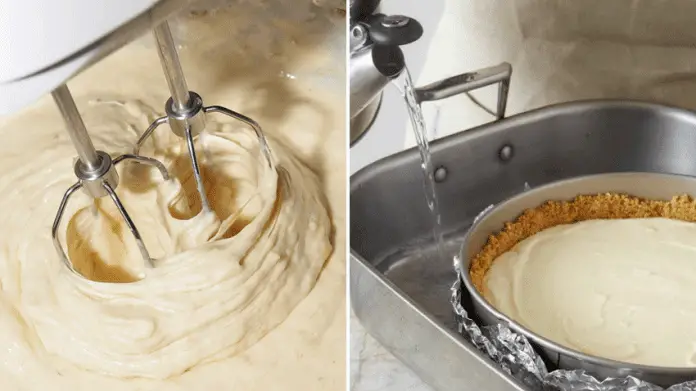Cheesecakes are undoubtedly little slices of heaven. It’s hard not to indulge in its slightly tarty, yet sweet and creamy taste upon every bite. But making your own homemade cheesecake can be a daunting task. This is particularly evident if it doesn’t come out perfectly from the oven. You name it, cracked tops or lumpy-looking cheesecake could completely ruin it! Fret not, as we gather 12 Useful Tips On How To Make A Great Cheesecake to help solve your common cheesecake problems!
1) Use Full-Fat Cream Cheese
Definitely no whipped cream or low-fat varieties. If you are going to make a great-tasting cheesecake, always keep this in mind: buy full-fat or full-fat sour cream cheese. And in case you are wondering which brand is the best, it’s safe to say you can’t go wrong with the Kraft Original Philadelphia Cream Cheese block.

2) Make Sure The Cream Cheese Is At Room Temperature
If you are going to make a cheesecake, do not use the cream cheese immediately out of the fridge. Cold cream cheese can cause your cake to become lumpy. So, wait it out until the cream cheese reaches room temperature.

3) Other Ingredients Need To Be At Room Temperature As Well
Other than making sure the cream cheese is at room temperature, the same rule also applies to the rest of the ingredients. And that includes everything from eggs to sour cream and sugar. Room temperature ingredients mean you can blend everything smoothly without all the sticky lumps.

4) Never Overbeat The Batter
Ever wonder why there are unsightly cracks on your cheesecake? Blame it on the air or more specifically, too much air. When you overbeat or overmix, too much air is incorporated into the batter. Your solution? Mix thoroughly but do not overdo it to the point where it becomes fluffy.
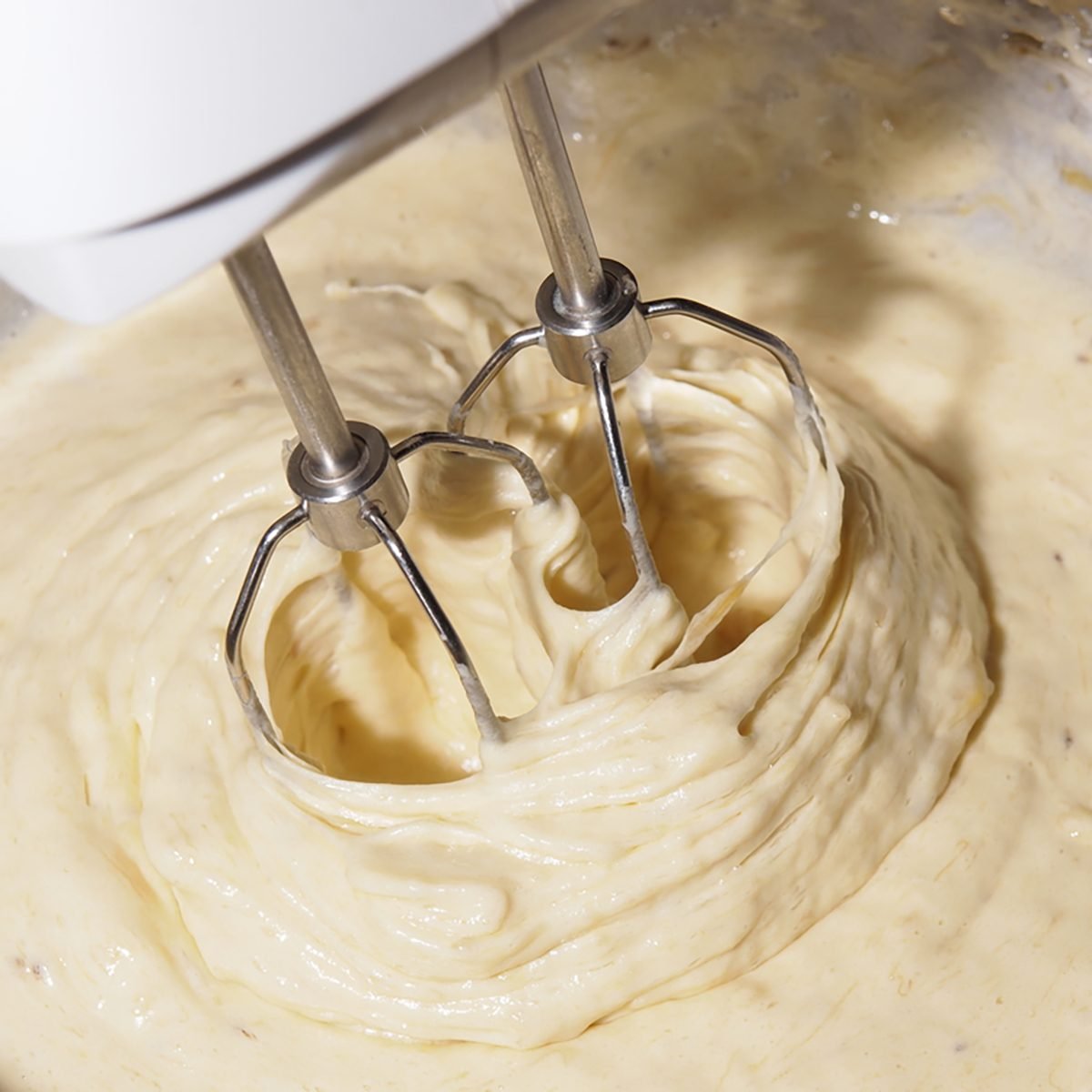
5) Don’t Forget The Scraping Part
Not only do you need to take note of your mixing technique, but scraping down every combined ingredient in your bowl is just as important. You definitely do not want your cheesecake batter to look lumpy and clumpy.

6) Let The Right Tool Do The Job
By the right tool, we mean it’s best to use a hand mixer for whisking the batter. You need to ensure that your cheesecake batter is as smooth and consistent as possible. Which is why it’s not a really good idea to use a manual wire whisk.
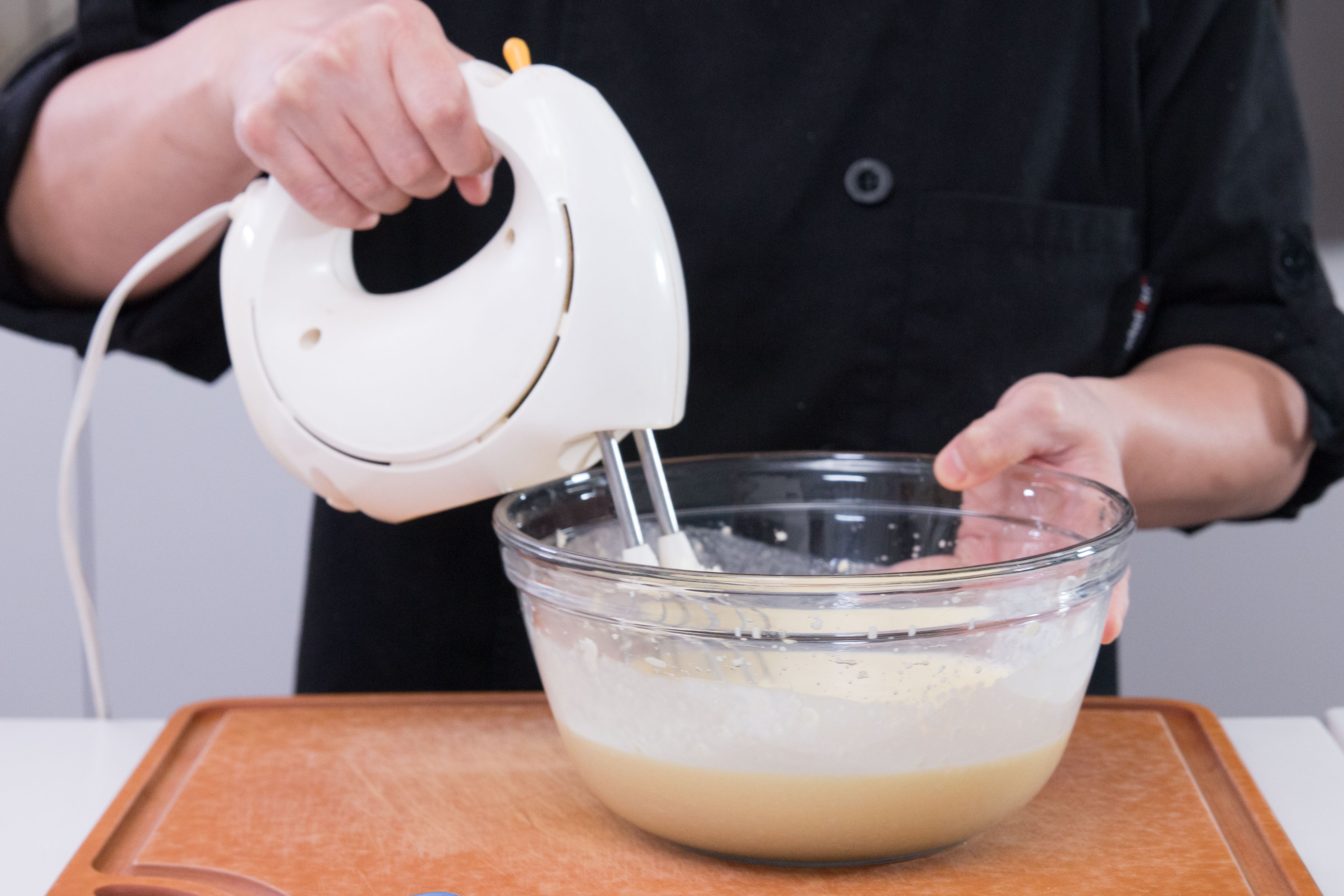
7) Flour Is Your Best Friend
Or use cornstarch. Either way, incorporating them into the cheesecake batter helps to make it firmer and creamier. Not to mention the starch holds everything together to prevent potential cracks after the baking process.

8) Use A Springform Pan
There are a few types of pans you can use for baking a cake. But in the case of cheesecakes, always stick to the springform pan. The kind that has removable sides, allowing you to release your cheesecake with minimum fuss. You don’t even have to worry about flipping the pan over, which helps keep your baked cheesecake intact.
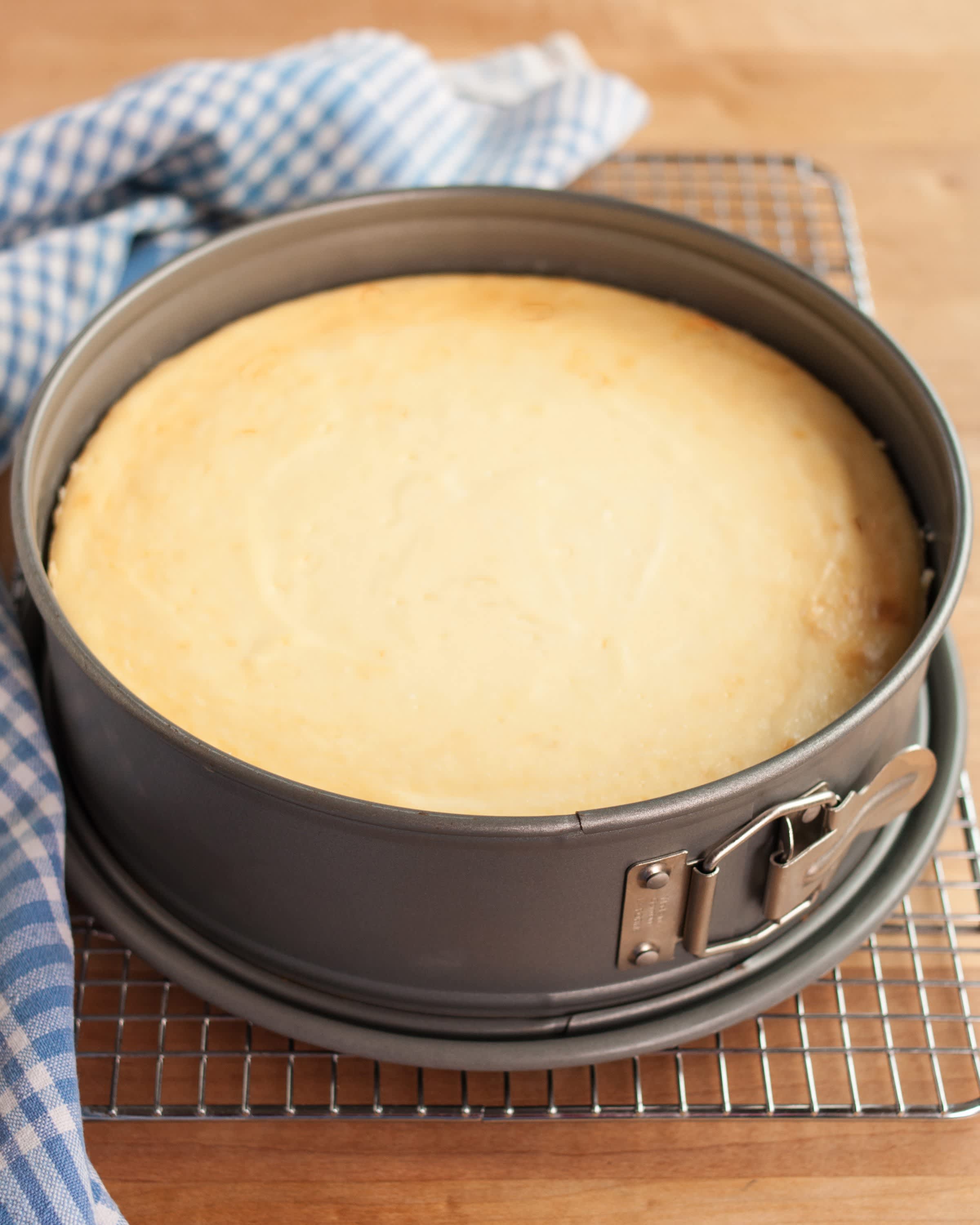
9) Remember To Grease The Pan
Yes, even for the non-stick variety as well. Use melted butter or cooking spray and ensure the bottom and sides of the pan are all greased. Do this step before you press the crust (e.g. graham crackers) into the bottom and add in the cheesecake batter.
/GettyImages-72802100-5b34e927c9e77c00372af64c.jpg)
10) Give Your Cheesecake A Water Bath
Otherwise known as bain-marie, this actually refers to a baking technique where you place the springform pan on top of a large pan filled with hot water in the oven. A water bath for your cheesecake adds moisture to the oven and also prevent cracks. It also helps to bake your cheesecake evenly. Keep in mind that using a springform pan for the water bath process can cause a potential leaking accident. You definitely do not want to end up with a wet and soggy crust on the bottom. So, leak-proof your springform pan by wrapping the exterior fully with aluminium foil.
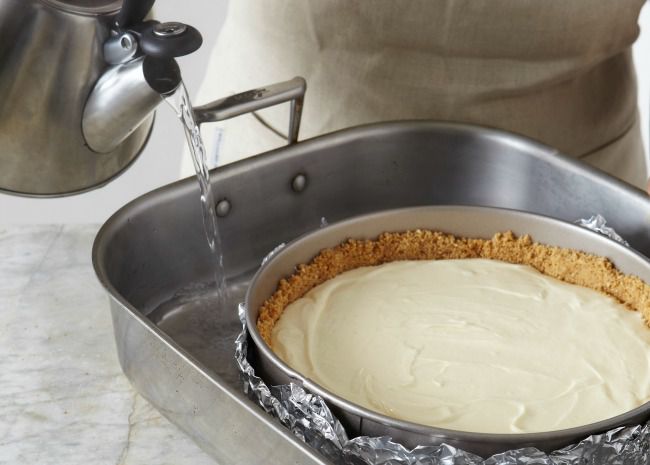
11) Don’t Overbake Your Cheesecake
Overbaking a cheesecake is definitely a no-no. Doing so can lead to the dreaded cracks. Instead, what you want here is a perfectly-baked cheesecake with both the top and edges looking set but remains jiggly in the middle. That jiggle means it’s the right time to remove the cake from the oven.
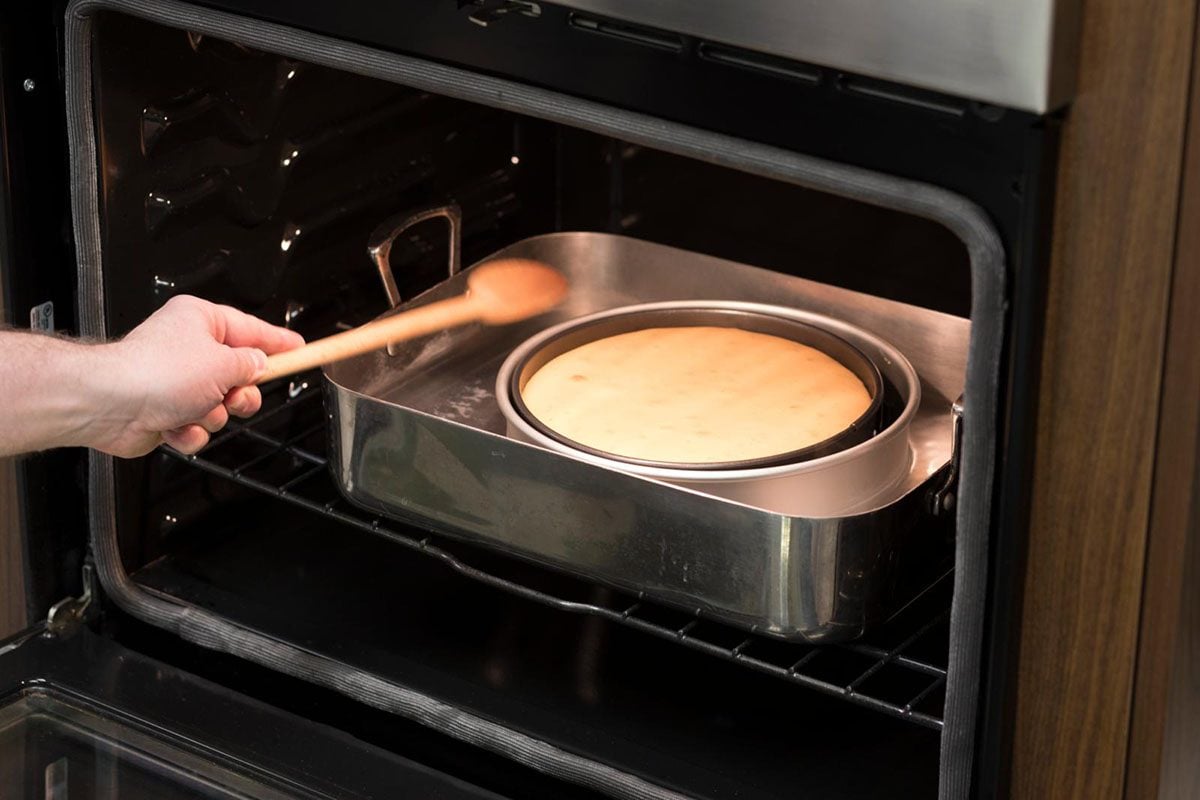
12) Let It Cool
So, your homemade cheesecake is done and it’s time to run a knife through it. But before you get all over-excited about it, your freshly-baked cheesecake needs a well-deserved “rest”. And that is, allowing it to cool gradually until it reaches room temperature. Doing so can make cutting easier and also helps to prevent cracking.
:max_bytes(150000):strip_icc()/cheesecake-11-5c257fb846e0fb0001782edf.jpg)
Can’t get enough of cheesecakes or too lazy to make your own? Perhaps these 10 Best Burnt Cheesecakes To Try In Klang Valley might interest you instead!


